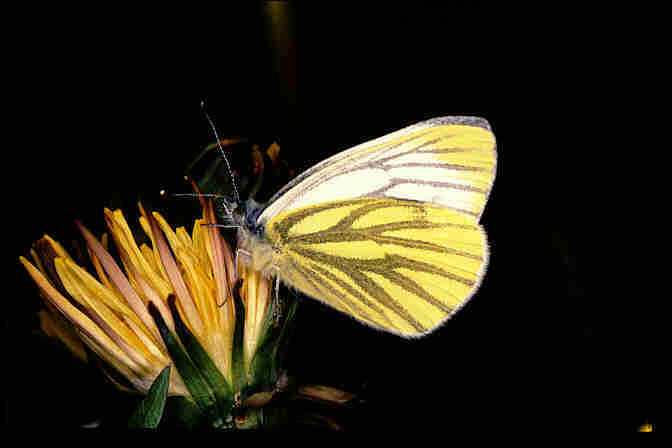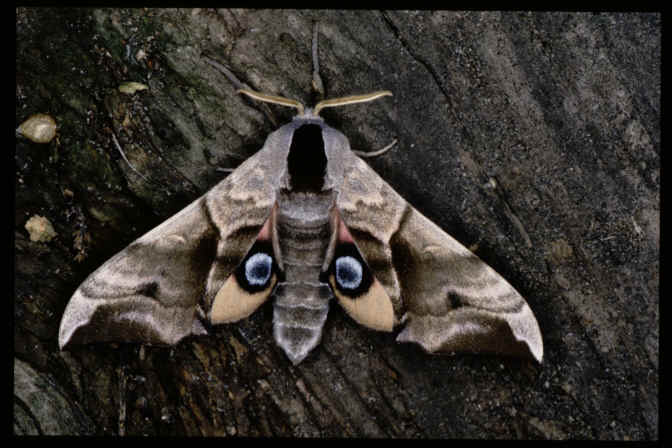

All butterflies possess a functional proboscis
Most moths do not have a functional proboscis
Feeding behavior |
| All adult butterflies have a proboscis, which is
extremely suited for obtaining liquid food, mostly nectar from flowers. The proboscis is
derived from structures from the maxillae. The length of the proboscis is determining for
which flowers can be used to obtain nectar. Often the size of the butterfly is in
proportion to the length of its proboscis. besides nectar lost of alternative liquids are
used as food: urine, tree sap and even decaying fruits and animals. urine and moist ground
is visited by butterflies to obtain essential minerals. In contrast with butterflies most moths do not have a functional proboscis. Those moths live off one's fat reserves, obtained during the larval stage. |
|
|
All butterflies possess a functional proboscis |
Most moths do not have a functional proboscis |